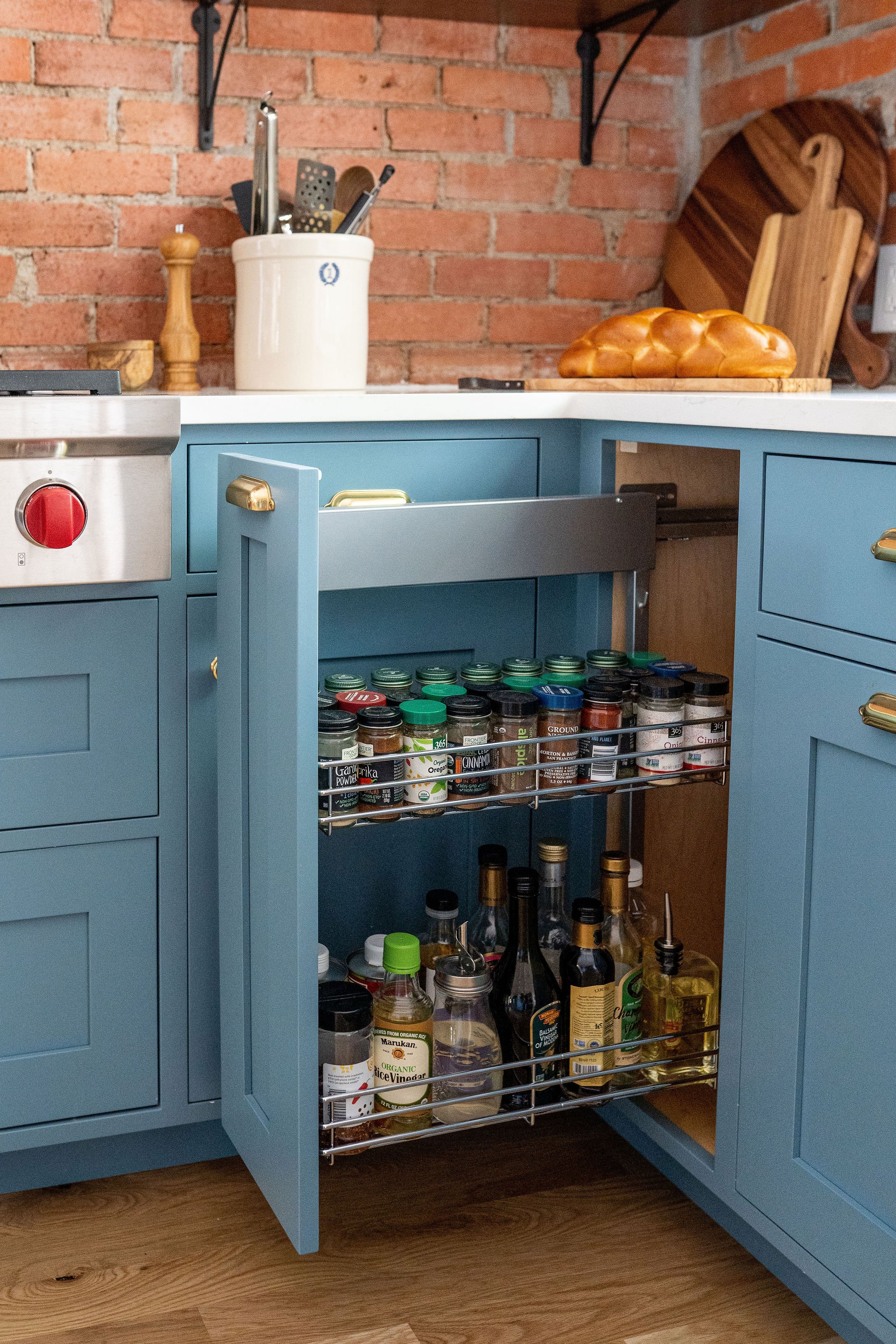6 Elements of Cabinetry Design
What is one of the first things you notice when you walk into a room? Odds are, your eyes are drawn towards the cabinetry. Cabinets are often the anchor which a room is built around and have a huge impact on the look and feel of a space. Whether they are wood or painted, light or dark, traditional or modern, your cabinetry will be a driver of your home aesthetic and function. So how do you determine what is right for you? Let’s go through the elements to think about when designing cabinetry.
Layout
The first step is the layout. This determines the amount of cabinetry you need as well as where it’s going, what size it needs to be, and how it functions. You will need to think about where the cabinets sit, how traffic flows around them, and what you need out of your space. You will also need to determine if you are doing upper cabinets, open shelving, bench seating, hood vents, etc. I would recommend an interior designer and/or kitchen designer for this portion as it is the most crucial piece to get right, especially in kitchens and bathrooms.
2. Inserts
The second decision to make is what kind of inserts you would like for storage and functionality. This is most important in kitchen cabinets but can be used elsewhere too. The one that I believe is a must-have is the trash/recycling pullout, this keeps everything neatly tucked away and keeps you from having to look at unsightly trash cans. There are also roll-outs behind cabinet doors, spice storage options, silverware and dish dividers in drawers, dividers for tray storage, corner cabinet pullouts, and more. Closet cabinets can have valet rods, velvet lined drawers for jewelry, special storage for shoes, etc.
3. Material Selection
The next step is material selection. Do you want solid wood, wood veneer, or melamine? There are other options out there but these are what we usually recommend for our clients. Solid wood is the highest quality material for cabinetry. The color and grain patterns have a natural beauty that compliments any style in any type of home. You can choose between “stain grade” where you can see the wood grain and color (think oak and walnut) and “paint grade” which is a less expensive wood species that, you guessed it, get’s painted (like poplar). You can also choose to do a wood veneer where a thin strip of wood is applied to a solid core of MDF (medium density fiberboard) or plywood. This can give you the look of solid wood with the stability of engineered materials which can keep it from warping. The final choice is melamine which gives a durable and smooth painted finish.
4. Cabinet Style
Now we can hone in on the style. There are three main cabinet styles to choose from. Inset cabinetry has the doors set flush into the wood frame which surrounds each cabinet door and drawer. This is a highly custom option and is usually used in traditional and transitional homes. The next style is full overlay in which you usually have a frameless cabinet and the doors and drawers sit tight together in front of the cabinet box completely obscuring it. This is a much more modern look and is used in modern and transitional homes. The final option is partial overlay which has a frame and the doors and drawers sit in front of it but you can see the frame in between. This look is very transitional and can go in most homes.
5. Door Style
Door styles are the next thing to think about when designing your cabinets. There are many different types of door styles and they can go from very simple to very ornate. Flat panel doors are as they sound, flat with no ornamentation or detailing. This style is used most in modern homes that want a more sleek look. Shaker doors have been hugely popular in the last decade with a very simple stile (vertical pieces on sides of door) and rail (horizontal pieces on top and bottom of door). Beadboard or tongue and groove cabinet doors are a fun way to add interest to your cabinet doors. I also like to mix and match flat panel drawers with a more detailed cabinet door for variety. These are some of the more common styles but there are so many more to choose from with different levels of detailing.
6. Hardware
Choosing hardware for your cabinets is the final element. I like to think of the hardware as little pieces of jewelry that can reflect the style of the home. Cabinet knobs are usually round or square and have one screw to attach to the cabinet. Cabinet pulls are long linear pieces that require two screws, one on each end. Finger pulls are another option if you want a clean look with no metal hardware. Finger pulls are usually a cut out in the top of doors and drawers that allow you to more easily open them without hardware. When using hardware you can have all knobs, all pulls, or mix them together. I most often like to do knobs on the cabinets and pulls on the drawers.
These are the biggest items that determine the look and functionality of your cabinets. It is no easy task and the options are endless! However, with careful thought and planning, you can have an incredibly functional home that looks fantastic.




